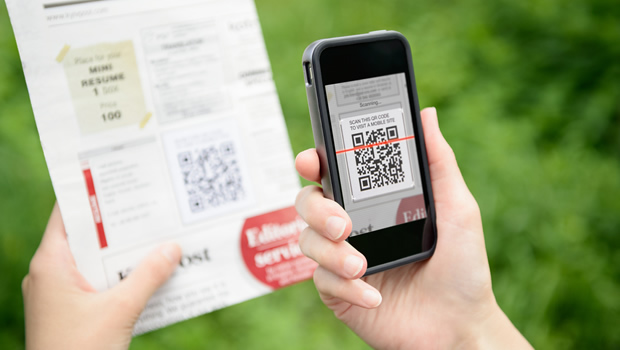We’ve been tracking the growth of wearable computing devices and associated technology as they are likely to have interesting implications for learning technology. As more and more such devices and broadly platforms emerge on the market, they will provide a developer options just as the mobile operating systems do today. Right now, most of these devices seem to tethered to a phone or other mobile device, but as miniaturization continues this tethering will no longer be required.
It isn’t really a stretch of imagination to consider how this technology can be put for learning assistance or performance, just like designers subsumed personal computers, and now tablets and smart-phones. While it seems novel for some of us, such technology has been around for a while, for example Motorola makes a whole range of devices that could be classed as ‘wearable computing’.
Folks were already talking about and proposing applications for this technology way back in the nineties (Brian D. Rauch). In addition to seeing technology companies attempting to make a market of these technologies, there is also significant research emerging from academia around this area, couple of interesting papers –
Using a wearable computer for continuous learning and support, (yes, Springer, costs money 40 USD!)
Maintenance Activities with Wearable Computers as Training and Performance Aids, by David Liu, The University of Queensland (PDF automatic download)
I think there are three reasons we shouldn’t ignore wearable technology for learning-
-
‘Real Sharing’ – (life streaming becomes real, searchable, sharable streams of data BIG data becomes real)
We’ve realized that learning can be better in a culture driven by sharing. As wearable computing allows us to actually stream data about every little activity we engage in – this will generate large volumes of data – what I like to think of as the real ‘big data’. This data can be considered as learning content, (quite unlike conventional ideas of what content should look like – video, audio, images, text, and now VR and AR) coupled with an understanding of context (next) can potentially transform learning and performance support at a very fundamental level.
-
The Provision of context
Computer equipped with sensors carried on the person can sense the user’s environment, starting quite simply with knowing location, the sensors and pattern recognition would allow the device to know what you are doing, be linked up with agents in such a way that it knows what you are looking at (sort of like Google Goggles, the image recognition and search tool). Then there will be devices watching your activities in real-time (devices like Nike Fuel). Putting all this together, and making some semantic sense of it is going to be a huge challenge that is being addressed by software as I write this. It’ll be possible for individuals to have a second memory in the cloud that records anything and everything the user might choose to build into the life-data-stream’.
As I mentioned before, machine (software/hardware) agents with the ability ‘to use devices/sensors to sense and make sense’ of these enormous volumes of data will allow us the holy grail – ‘context’, as a designer if you can capture context, it changes the playing field. You can now target learning material and support, at the right time, actually realizing what JIT means. All this support or content delivered to the user without any or little human intervention won’t really change how we ‘learn’ but will definitely change our definitions of performance support and learning content.
-
Natural Progression from mobile phones
When mobile phones started out they were like cinder blocks or bricks, now they are tiny, packed with enormous computing ability, storage and a lot of other features that make them apt personal computing devices. Over the last few years, we have seen the incorporation of sensors that are not typically used for human interfacing (gyroscopes, accelerometers, GPS, IR, etc… great link for more) These sensors now allow the device much more capability, while this may not be human friendly, it will certainly be machine-friendly.
Last but not least, we shouldn’t discount the continuous adoption of technology, just like we moved from regular wire-line phone services to wireless data predominant services, we will move from using smart-phones to wearable personal computing devices. The first wave of devices is only just beginning to appear on the market. In another few years a lot of us will be wearing computing, perhaps quite literally on our sleeves.
The question now for designers and developers is simple, where does one begin? From experience, we know early developer adoption comes at a price. Should we tie into developing for clearly proprietary platforms or wait for open source wearable computing options to emerge on the market. Learning designer and developers will eventually have to make some hard choices if they are to start taking advantage of this new ‘instructional technology’.
Some random but interesting stuff I dug up – worth a look.
Wearable Tech
A great collection of pictures of the devices, the range is truly astonishing, considering this is only the beginning of a wave of devices.
Wearing Your Heart on Your Sleeve: A Wearable Computing Primer (of sorts)
A great presentation that gives a great idea of what wearable computing actually is, and should inspire learning designers.
Wearable Technology: The Bra Designed to Shock Attackers
Some wearable technology is just plain weird, or perhaps I’m looking at it wrong.
Smart Body, Smart World: The Next Phase of Personal Computing
Sarah Rotman Epps makes some interesting comments about the nature of wearable technology.
9 Trends to Watch For in Wearable Tech
If it is worn, can trends be far behind?
Upcoming Events
CIPD HRD 2013 | Apr 24 – 25 | Olympia, London, UK | Stand #425
ASTD ICE 2013 | May 19 – 22 | Dallas, TX, USA | Stand #839



















